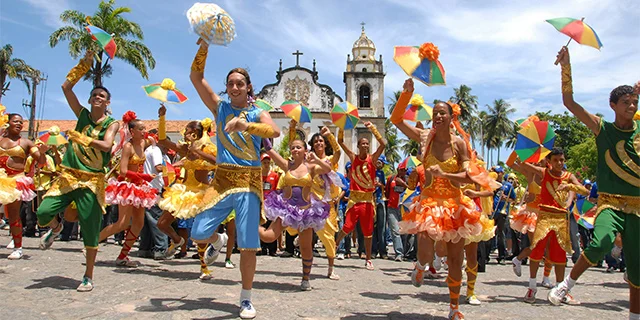Music & dances of the Brazilian Carnival
Explore the origins and the background of the rhythms that offers the unique vivid and joyful notion to the Brazilian Carnival.

Music has a fundamental role in Brasilian society. The Afro-Brazilian population which is a significant part of the country’s societal structure was always using music as a major mean of expression. According to historical documentation, the Portuguese immigrants were practicing slave trading in their South American colony already from the 15th century. The slaves who transferred to Brazil were coming from Angola and West Africa. In their new land, they brought their culture, their love for music and their rhythms.
Nowadays, Brazilian music can be described as a result of various musical styles merging. The Afro-Brazilian, the European and the American indigenous sounds came together and constructed a series of unique rhythms with an uplifting spirit and tremendous sentimental value. The Brazilian Carnival is undoubtedly a major event that encompasses some of the most typical features of the Brazilian music culture. Among them, we can distinguish samba, frevo, and axe.
Samba

Samba is recognized as one of the most popular Brazilian cultural expressions and parallel to that it is considered as a major symbol of the Brazilian identity. Its roots date back to the beginning of the 18thth century and the city of Rio De Janeiro. The modern samba emerged during the 20th century and more specifically in 1930 when a group of musicians established the first samba school in Rio. Samba became synonymous with the Brasilian Carnival while it is well known for its vibrant melody and uplifting rhythm. The topics and the lyrics of the songs that accompany the carnival parade can be related to politics, sports, history, and other social issues.
Frevo

Frevo is another musical style that is highly related to the Brazilian Carnival. It emerges at the beginning of the 19th century, while its roots can be tracked to the Pernambuko region. Its name derives from the Portuguese word “ferver” that can be translated as “boiling”. The implication of the term itself illustrates the dancing moves of this music since by listening to the sounds the dancers feel as they are boiling from the ground. Practically, frevo was developed as a transformation of the capoeira and includes jumps, fast leg movements, and tumbling. Its presence at the Carnival parade started when the Brazilian Army forces paraded on its rhythm in the city of Recife at the end of the 19th century.
Axé

The rhythm and the melody of Axé are also typical accompaniments of the Brazilian Carnival parades. It is a fusion of African and Caribbean music styles that met each other and merged with the Afro-Brasilian music culture during the 20th century. It includes indigenous (Candomble, Umbanda) religious greetings that refer to “good vibration”. Etymologically, the word comes from the Yuruba (African ethnic) term “ase” that can be translated as soul, light or spirit. Today axe melodies can be heard in many Carnival festivals and especially in Bahia regions which has a strong Yuruba influence.


